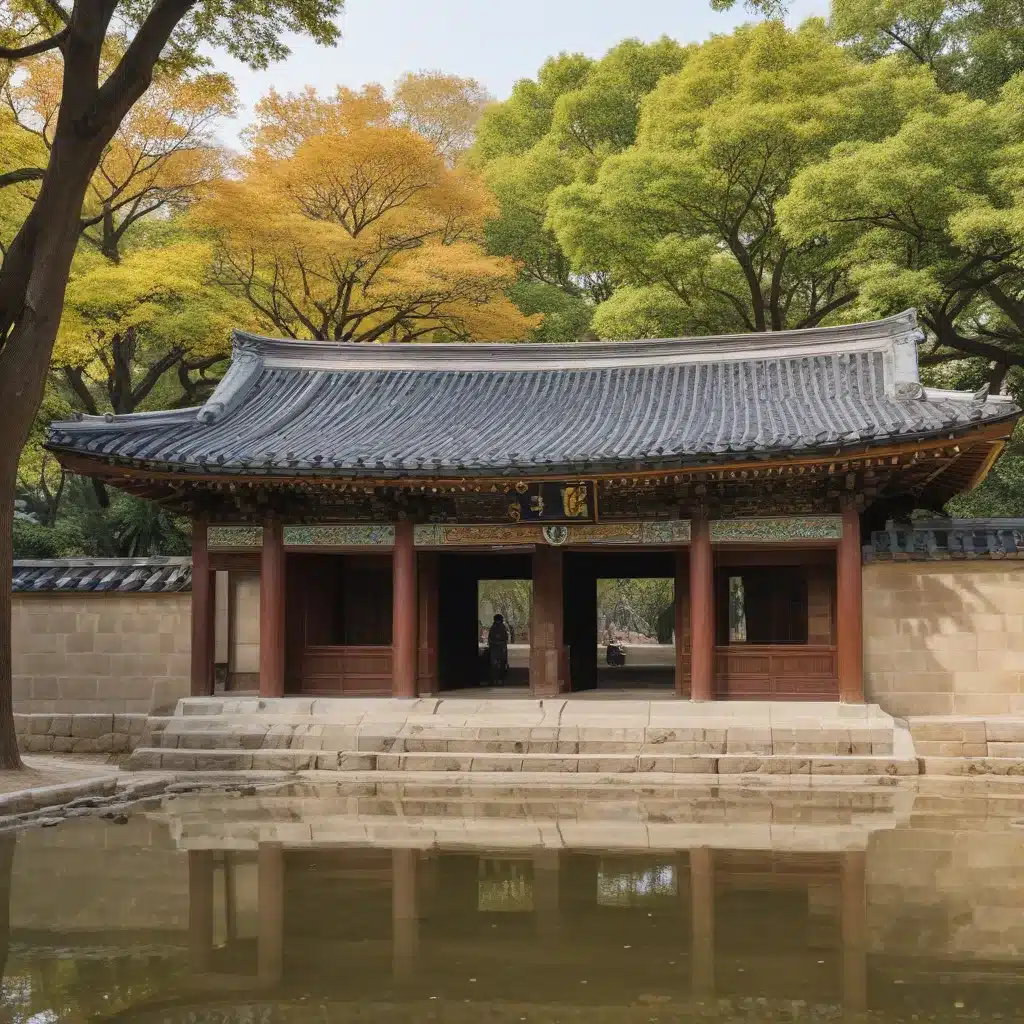
A Journey Through Seoul’s Enchanting Royal Retreat
As I step through the grand Donhwamun Gate, the bustling streets of Seoul fade away, replaced by an oasis of tranquility. I find myself immersed in the serene world of Changdeokgung Palace, a UNESCO World Heritage Site that has captivated visitors for centuries.
The palace’s rich history unfolds before me, and I can’t help but feel a sense of awe as I imagine the ancient royal rituals and ceremonies that once took place within these hallowed walls. Constructed in the early 15th century during the Joseon Dynasty, Changdeokgung was originally built as a secondary palace to the grander Gyeongbokgung, but it soon became the main seat of the dynasty, serving as the royal residence for 250 years.
According to UNESCO, the palace’s exceptional design seamlessly blends the official and residential buildings with the surrounding natural landscape, creating a harmonious and picturesque ensemble. As I wander through the grounds, I can’t help but marvel at the ingenious way the architects and landscape designers have adapted the structures to the uneven terrain, making the most of the site’s natural features.
Exploring the Enchanting Rear Garden
One of the true highlights of my visit is the Biwon, or “Secret Garden,” which lies behind the main palace complex. This expansive and meticulously maintained garden is a true feast for the senses, with over 56,000 specimens of various tree and plant species, including towering walnut, white oak, and zelkova trees.
As I stroll along the winding paths, I’m struck by the tranquil beauty of the lotus pond, flanked by delicate flowering plants and elegant pavilions. The garden’s serene atmosphere is enhanced by the gentle sound of running water and the occasional chirping of birds, creating a truly restorative and rejuvenating experience.
According to TripAdvisor reviews, the Biwon is a must-see for any visitor to Changdeokgung, offering a peaceful respite from the bustling city and a chance to immerse oneself in the beauty of traditional Korean landscaping.
Discovering the Palace’s Architectural Gems
As I continue my exploration, I’m struck by the exceptional craftsmanship and attention to detail that can be seen throughout the palace complex. From the ornate wood carvings adorning the tiled roofs to the intricate stone foundations, every element of the architecture reflects the sophistication and artistry of the Joseon period.
One of the standout structures is the Injeongjeon Hall, the main audience hall where the king would receive guests and conduct state affairs. This grand edifice, with its sweeping roofline and elegant columns, is a masterpiece of traditional Korean palace design.
Nearby, the Seonjeongjeon Hall, which served as the king’s personal study and library, is another architectural gem, with its striking red-and-blue color scheme and delicate latticework. I can almost feel the weight of history as I run my fingers over the smooth, polished wood of the doors and windows.
Uncovering the Palace’s Symbolic Meanings
As I delve deeper into the history and significance of Changdeokgung, I come to appreciate how the palace’s design and layout reflect the Joseon Dynasty’s unique worldview and value system. According to UNESCO, the site selection and spatial arrangement of the buildings were based on the principles of pungsu, a Korean form of geomancy, as well as Confucian ideology.
The placement of the administrative and residential areas, the orientation of the structures, and the integration of the natural landscape all embody the Joseon’s reverence for harmony, balance, and the natural world. It’s a fascinating example of how architecture can be imbued with deeper symbolic meaning and philosophical underpinnings.
As I stand in the center of the palace grounds, I can almost feel the weight of history and the legacy of the Joseon Dynasty pressing down upon me. It’s a truly humbling and inspiring experience, and I find myself eager to learn more about the rich cultural heritage that Changdeokgung represents.
Embracing the Spirit of the Past
My visit to Changdeokgung Palace has been a truly transformative experience, one that has allowed me to step back in time and immerse myself in the grandeur and refinement of Korea’s royal past. From the stunning architecture to the serene natural landscapes, every aspect of this UNESCO World Heritage Site has left a lasting impression on me.
As I prepare to depart, I can’t help but feel a sense of gratitude for the opportunity to explore this remarkable piece of history. It’s a reminder that the past can still speak to us in powerful and meaningful ways, if we’re willing to listen and open ourselves up to the wonders of the world around us.
If you’re planning a trip to Seoul, I highly recommend carving out time to visit Changdeokgung Palace. It’s a true gem that will transport you to a bygone era and leave you with a deeper appreciation for the rich cultural heritage of Korea.

